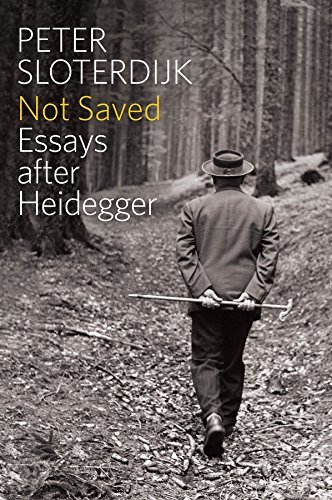What do you think?
Rate this book


297 pages, Kindle Edition
First published January 1, 2001
"posthyperbolics from insight could be a stage of maturity; posthyperbolics from weakness is a phase of the economy"
If one lifts ones eyes from these findings in order to survey the older Critical Theory, then it becomes immediately evident how sharply the dualism between the euphoric and the dysphoric mode is marked in it. Yet to its distinctive features belongs the fact that one may only speak about the dysphoric mode, while the euphoric mode presents a secret that is to be stringently guarded. [...] The Critical Theorist [...] comes into the world with the mission to gauge it for is better possibilities. Because he cannot dare to confess himself to be the privileged memory of happiness and to this extent to be truth incarnate, the critical messiah must choose, [...] the form of indirect communication and help the world to experience itself as untruth incarnate.
\
Gnosticism [...] First Dramaturgies that incessantly interpret a single fundamental event - the passing of the soul which has been constituted above and outside this world, through the world, and the soul's fate in the stretch of errancy allotted to it. [...] The appeal to gnosticism, rather, arises from the incommensurable experiences of happiness, in comparison with which most profane situations seem unreal, insipid, and unacceptably crude.
\
There is nothing to be done with intense happiness - it is only accepted as a background of the world against which almost all figures from empirical life appear to be wayward.
Critical Theory—like every disappointed idealism—indemnifies itself against the existing through escalation. The antithesis, that the whole is the false, attains its sharpness only from surpassing the already sufficiently exaggerated thesis.
[...]
Perhaps the supposedly critical theory had to be realized as Aesthetic Theory because to its author it was at least indirectly clear that only works of art still endure as spaces for exaggeration, while everything that is merely discourse, theory, and complaint aspires to the cultural center, where what is wagered is taken back and what is acutely intensified is eroded. Indeed, perhaps culture is another word for the taming of hyperboles—
In order to speak of the evidence of the whole, we no longer choose images of the petrified, the congealed, the impervious. [...] We are dealing with chaotic, accelerated structures, with nets and foam, with turbulences and indeterminate drifts, [...] These constructs are too intangible for one to lash out against them, and too complex to be guided by such a primitive movement as a ‘revolution’—a kinetic metaphor, of which one eventually notes how much it remains bound to the era of simple ontologies of solid bodies.